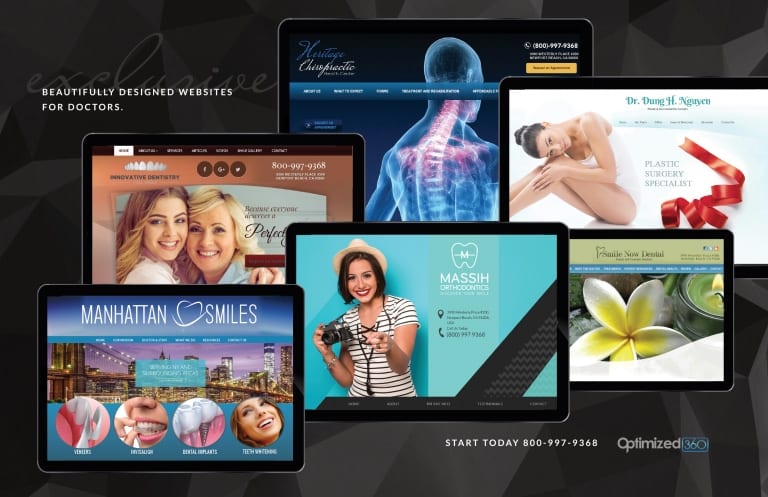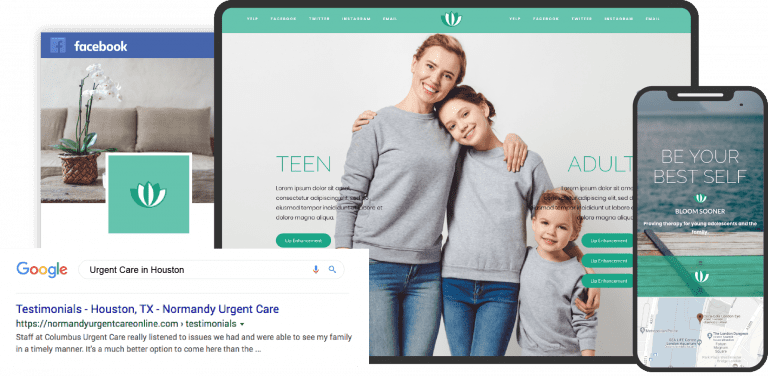As a healthcare business, you are often only as good as your last patient’s treatment experience. The Internet abounds with stories of both good and abysmal patient interaction experiences. With the nature of social media today, you can bet that whether your patient experiences a wonderful personal experience with your practice, or even the slightest oversight or rudeness, people will go viral with it on Facebook, Twitter, and other outlets. Social media has allowed every customer service experience to travel much more quickly than before through word of mouth. Every time your patient deals with your website or your office staff or medical practitioners, you must ensure they come away with a positive impression. Also, see the ultimate guide to reputation management for doctors.

Dedicating yourself to being a medical practice that delivers a great customer experience through support, interaction, and education is just as important for chiropractors, optometrists, dentists, and medical doctors as it is for other companies such as clothing retailers and shoe stores. Zappos has built its billion-dollar empire by focusing on ways to deliver excellent customer service. Nordstroms, who has never sold tires, made the news when they purchased the Northern Commercial Company and honored a customer’s request for a refund on tires they had purchased months before – even though they are a clothing retailer.
Offering a great service is essential to patient satisfaction, but don’t ignore all the other ways you can increase your customer satisfaction and guarantee that they will have nothing but good things to say about your healthcare practice when speaking to friends and family. Here are some sure-fire practice management ideas to help make your practice stand out from the crowd and ensure that you’re delivering excellent customer service. Also, see “Etiquet for medical staff.”
Respond As Quickly As Possible

Speed is one of the biggest factors in good customer service, especially if your patient’s request is time-sensitive. A response time report from StellaService in 2011 of 100 internet companies showed that their average response time was 17 hours. A follow-up study performed by Frost in 2016 showed the response time was still 17 hours. When your potential new patient fills out an online form asking a question or asks a question about your practice, the longer you wait to reply, the better chance they will seek that information from another provider.
In fact, the 2016 study showed just how important replying quickly to patient needs is — 41% of the consumers they surveyed identified being placed on hold as their biggest consumer aggravation. Make sure you don’t leave patients frustrated by being forced to wait to address their requests. Using our HIPAA-Compliant forms lets you quickly learn about new requests and use auto-responses to improve the patient experience.
Know Your Patients
Knowing and responding to your patient’s wants and needs is the key to great interactions. Your patients, like all consumers, love personalization. Find out who they are, remember their names, and take notes of personal details when you interact with them. Being able to refer to their personal comments in the future adds an extra layer of personalization.
Encourage your patients to participate in the doctor/patient relationship by asking them questions. For example, Starbucks’ March 2012 new campaign focused on improving customer and staff relationships by encouraging customer interaction. Each customer who introduced themselves by name was given a free latte for 350,000 free latte drinks. See how O360 can help you with social marketing.
Fix Your Mistakes

One surefire way to gain a bad reputation is not to take responsibility for your mistakes. If your practice offers a product or service online or in other advertising, make sure you honor that offer, even if it was incorrectly printed. Transparency in any business area is essential, and customer service is no different. Show that your practice has high standards by always striving for extra personal responsibility with your patients. Your goal is not to be right but to have satisfied patients.
For example, an Amazon customer ordered a new PlayStation as a Christmas gift for his son in 2007. The customer was not home when the parcel was delivered and was signed for by a neighbor instead. The package was left outside the customer’s home and was quickly stolen. While Amazon was not legally responsible for this mistake, they made things right by sending a new PlayStation in time for Christmas and adding free shipping.
Go The Extra Mile
When you go the extra mile for your patients, you’ll end up with a happy customer and set yourself up for long-term future business and positive word of mouth. Being open to patient suggestions can differentiate between a happy patient and one who might start browsing competitors’ websites. UK-based Sainsbury’s is one store that went the extra mile for a customer. When three-year-old Lily Robinson wrote a letter to them in 2011 asking why Tiger bread wasn’t called giraffe bread, Sainsbury’s customer service manager replied that it was a great idea. In early 2012, it was renamed “giraffe bread.” Little touches like that can help you build your brand positively.
Think Long Term
A patient can be for life, so think long-term when dealing with them. When you keep them happy, they will be loyal and do free marketing for you through word of mouth. According to author Pete Blackshaw, if you have a patient who is satisfied with your service, they’ll tell at least three friends – but if they are not satisfied or angry, through word of mouth, they can let up to 3,000 other people know how unhappy they are.
What type of customer service you provide can impact both retaining your existing patient base and cultivating potential patients. In fact, a recent survey indicated that up to 68 percent of consumers would tell friends and family about a negative experience by commenting about it on a social network. Considering that the average Facebook profile has 229 friends, it is easy to see how your patient’s reaction can quickly reach thousands of people.
Delivering a positive experience to your patients helps your practice in many ways and can increase your bottom line and revenue stream. According to a customer service report by RightNow Technologies in 2011, up to 86 percent of American adults will pay more out of pocket to ensure a better customer experience, while up to 73 percent stated that friendly customer service has resulted in them falling in love with a brand. As everything about your practice involves branding, that’s something to remember.
How you provide patient service through your website, including ease of use, the ability to contact your office, and reply time, means that having a great medical website design is one of the best ways you can initially make a good impression on prospective clients.
Other Steps to Better Satisfaction Rate
- Improve Appointment Scheduling: Ensure that the appointment scheduling process is smooth, efficient, and convenient for patients. Consider implementing an online booking system to provide 24/7 scheduling options.
- Reduce Wait Times: Nothing is more frustrating for patients than long waiting times. Streamline the check-in process, manage the scheduling better, and improve operational efficiency to reduce wait times.
- Offer Multiple Communication Channels: Implement various communication channels such as phone, email, text, and online portals. A chatbot or AI assistant can handle routine inquiries, freeing up staff for more complex issues.
- Regular Staff Training: Regularly train your staff in patient care, interpersonal skills, and the latest medical procedures. A well-trained staff can significantly improve patient satisfaction.
- Patient Follow-ups: Follow up with patients after their appointment to see if they have any questions or concerns. This not only demonstrates your care but can also help catch complications early.
- Transparent Billing: Medical bills can be confusing. Ensure to provide transparent, itemized billing, and have staff available to explain any charges to the patients.
- Create a Comfortable Environment: The physical environment of your practice can greatly affect patient satisfaction. Make sure it’s clean, comfortable, and well-lit.
- Patient Engagement: Encourage patients to be active participants in their healthcare. Provide educational materials, use understandable language, and take the time to answer their questions.
- Respect Patients’ Time and Privacy: Always respect the patient’s privacy and make sure to maintain confidentiality. Also, value their time by keeping to appointment schedules as closely as possible.
- Incorporate Patient Feedback: Regularly solicit feedback from your patients and genuinely incorporate it into your practice. This helps identify areas for improvement and shows patients that their opinion matters.
At Optimized360, we understand how to help you deliver excellent customer service through your website and how to increase your customer satisfaction with a unique, easy-to-use site. Check O360’s Reputation Management service here.













